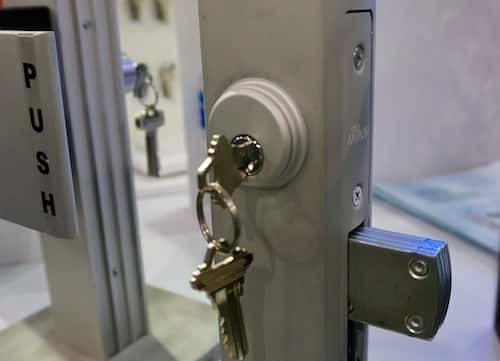Securing the Skyline – Aerospace Counter UAS Red Teaming for Tomorrow
In an age where unmanned aerial systems UAS, commonly known as drones, are becoming increasingly ubiquitous, and the imperative to secure the airspace from potential threats has never been more critical. As drones evolve, so too must the strategies and technologies to counter them. This is where the concept of Aerospace Counter UAS Red Teaming comes into play, representing a proactive approach to safeguarding our skies by anticipating and mitigating drone-related threats.
Understanding the UAS Threat Landscape
The versatility and accessibility of drones have led to their rapid adoption across various sectors, from commercial deliveries to recreational activities. However, this proliferation also introduces significant risks. Malicious actors can exploit drones for purposes such as espionage, smuggling, and even terrorism. The evolving threat landscape necessitates robust defense mechanisms capable of countering these diverse and dynamic risks. Red Teaming, traditionally used in military and cyber security contexts, involves a group of experts simulating adversarial tactics to test and improve an organization’s defenses. In the realm of Aerospace Counter UAS, Red Teaming encompasses a multidisciplinary approach where experts from aviation, cyber security, electronic warfare, and other relevant fields collaborate to identify vulnerabilities and develop countermeasures against potential UAS threats.
The Role of Aerospace Counter UAS Red Teams
Aerospace Counter UAS Red Teams play a crucial role in enhancing airspace security. Their primary tasks include:
Threat Simulation – By emulating the tactics, techniques, and procedures TTPs of potential adversaries, Red Teams can provide a realistic assessment of current UAS defenses. This includes testing the resilience of detection systems, electronic countermeasures, and physical barriers.
Vulnerability Assessment – Identifying weaknesses in existing counter-UAS systems is a fundamental task. This involves evaluating the effectiveness of radar, radio frequency RF sensors, and optical systems in detecting and tracking drones, as well as assessing the robustness of communication links and control systems and check this site https://aevex.com/counter-uas/.

Innovative Tactics Development – Red Teams are tasked with devising innovative attack scenarios and techniques that adversaries might use. This forward-thinking approach ensures that defenses are not only reactive but also proactive, capable of anticipating and neutralizing emerging threats.
Training and Preparedness – Regular exercises and simulations conducted by Red Teams help train security personnel and first responders. These drills enhance readiness and ensure that protocols are well-rehearsed, reducing response times in real-world scenarios.
Challenges and Future Directions
The dynamic nature of UAS technology poses significant challenges for Red Teams. As drones become more sophisticated, with capabilities such as autonomous navigation, swarming, and stealth technologies, the difficulty of countering these threats escalates. Additionally, the regulatory landscape must keep pace with technological advancements to ensure that counter-UAS measures are legally compliant and do not infringe on legitimate drone operations.
Looking forward, collaboration between government agencies, industry stakeholders, and academic institutions will be vital. Sharing intelligence and best practices can lead to more effective counter-UAS strategies. Moreover, investment in research and development will be essential to stay ahead of adversaries. Emerging technologies such as artificial intelligence AI and machine learning ML hold promise for enhancing detection and response capabilities, offering new avenues for innovation in counter-UAS operations.


 A monogrammed dance floor adds a personalized touch, while delicate floral arrangements imbue the space with natural beauty and fragrance. Table settings adorned with fine china, crystal glassware, and fresh linens elevate the dining experience, transforming each meal into a feast for the senses. Entertainment plays a vital role in keeping guests engaged and entertained throughout the event. A live band or DJ sets the tone for the evening, filling the air with music that inspires guests to dance and celebrate and
A monogrammed dance floor adds a personalized touch, while delicate floral arrangements imbue the space with natural beauty and fragrance. Table settings adorned with fine china, crystal glassware, and fresh linens elevate the dining experience, transforming each meal into a feast for the senses. Entertainment plays a vital role in keeping guests engaged and entertained throughout the event. A live band or DJ sets the tone for the evening, filling the air with music that inspires guests to dance and celebrate and  One of the primary tools in estate planning is the last will and testament. A will allows individuals to dictate how their assets will be distributed upon their death, ensuring that their wishes are carried out and minimizing the potential for family disputes or legal challenges. Estate planning attorneys can assist clients in drafting clear and legally binding wills that accurately reflect their intentions, taking into account factors such as beneficiaries, guardianship arrangements for minor children, and charitable bequests. In addition to wills, trusts are another essential component of many estate plans. Trusts offer a flexible and efficient way to manage and distribute assets, providing benefits such as privacy, asset protection, and continuity of wealth across generations. Estate planning attorneys can help clients establish various types of trusts, including revocable living trusts, irrevocable trusts, and special needs trusts, tailoring each arrangement to suit their specific needs and objectives. Beyond asset distribution, estate planning encompasses a range of other important considerations, such as incapacity planning and healthcare decision-making.
One of the primary tools in estate planning is the last will and testament. A will allows individuals to dictate how their assets will be distributed upon their death, ensuring that their wishes are carried out and minimizing the potential for family disputes or legal challenges. Estate planning attorneys can assist clients in drafting clear and legally binding wills that accurately reflect their intentions, taking into account factors such as beneficiaries, guardianship arrangements for minor children, and charitable bequests. In addition to wills, trusts are another essential component of many estate plans. Trusts offer a flexible and efficient way to manage and distribute assets, providing benefits such as privacy, asset protection, and continuity of wealth across generations. Estate planning attorneys can help clients establish various types of trusts, including revocable living trusts, irrevocable trusts, and special needs trusts, tailoring each arrangement to suit their specific needs and objectives. Beyond asset distribution, estate planning encompasses a range of other important considerations, such as incapacity planning and healthcare decision-making.